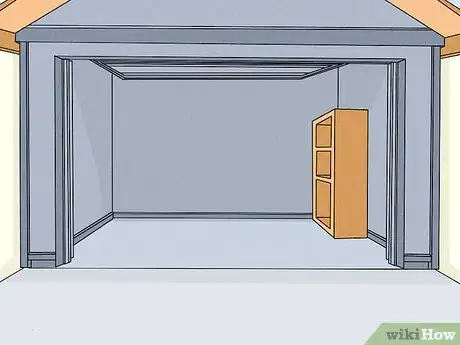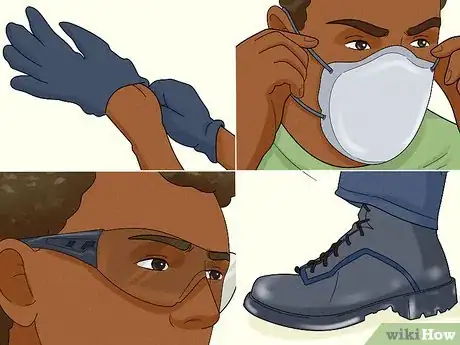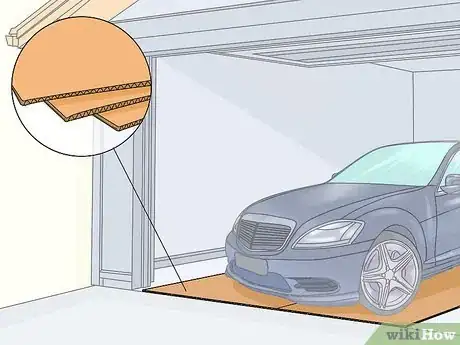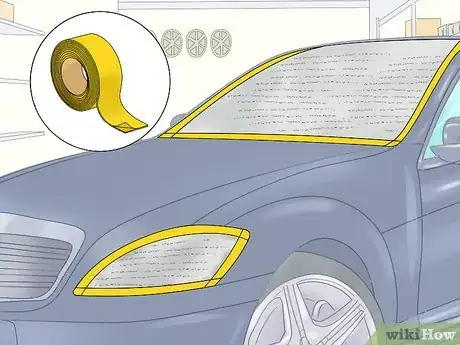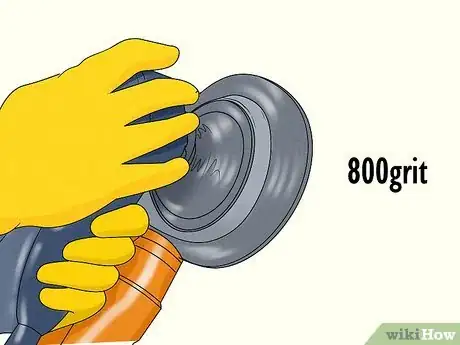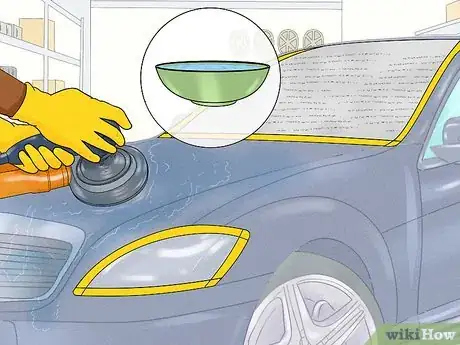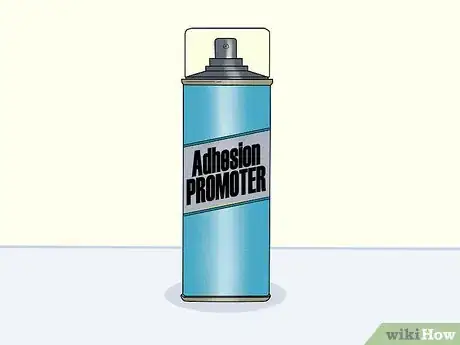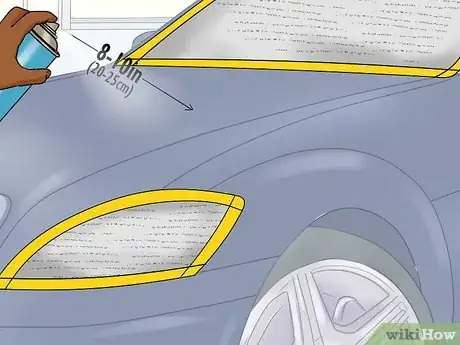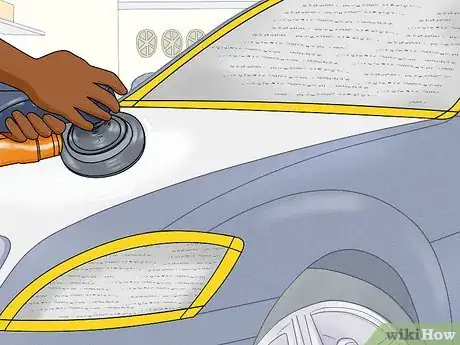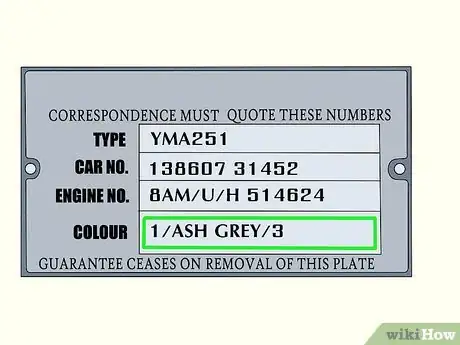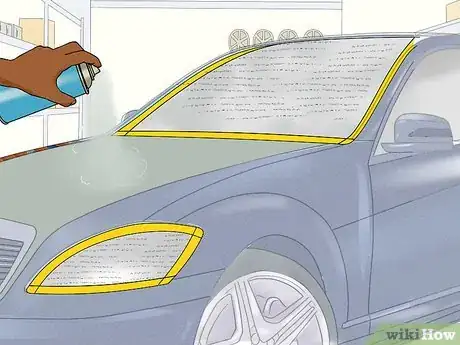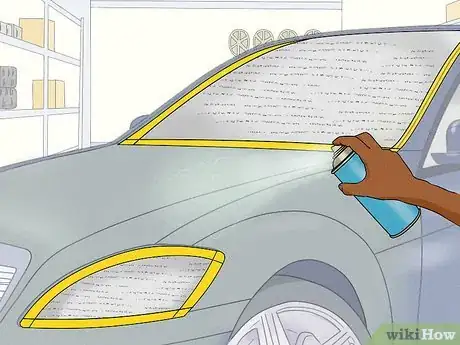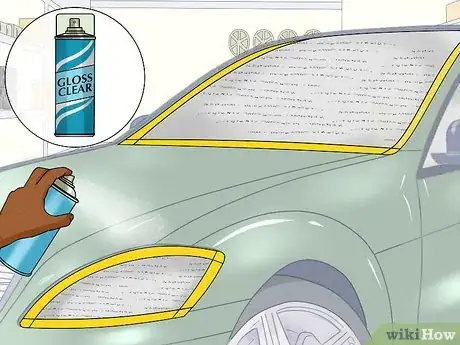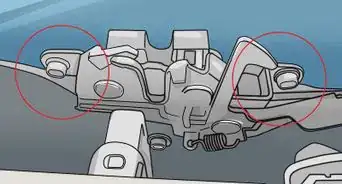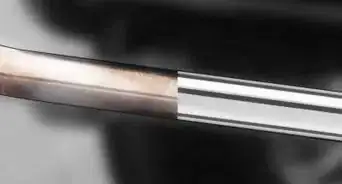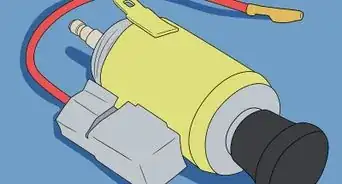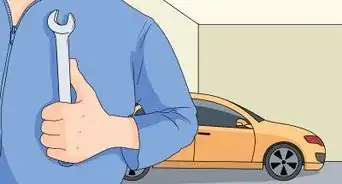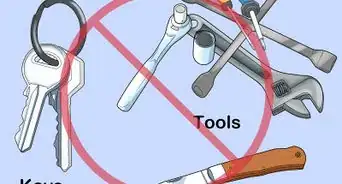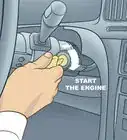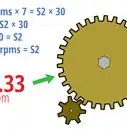This article was co-authored by Tom Eisenberg. Tom Eisenberg is the Owner and General Manager of West Coast Tires & Service in Los Angeles, California, a family-owned AAA-approved and certified auto shop. Tom has over 10 years of experience in the auto industry. Modern Tire Dealer Magazine voted his shop one of the Best 10 Operations in the Country.
There are 15 references cited in this article, which can be found at the bottom of the page.
This article has been viewed 31,190 times.
You never see any scuffed or off-color parts on any of the cars in the movies like The Fast and the Furious, do you? That’s because they’re all painted by professionals. But while you may not have the equipment and gear the pros in the auto shops use, you can definitely still pull off a professional-looking paint job at home. The exterior parts of most modern cars are made of plastic, and with the right supplies, it’s actually much easier to paint them than you may think.
Steps
Prep
-
1Paint the parts in a well-ventilated area. Choose a clean, dry room such as a garage or workshop. Open up some windows and turn on some fans to increase the airflow so the toxic fumes of the paint don’t build up in the space. Select a clean spot out of direct sunlight if you’re working outside.[1]
- Spray paint contains harmful chemicals known as volatile organic compounds (VOCs) so it’s really important that you work in a well-ventilated space.
- If you’re working in a garage, open up your garage door to allow fresh air to circulate.
-
2Put on safety gear and clothing to protect your face and skin. Wear a respirator or face mask to avoid breathing in the toxic fumes. Put on safety goggles, glasses, or face shields to prevent paint from getting into your eyes. Wear pants, a long-sleeved shirt, and gloves to avoid getting paint directly onto your skin while you work.[2]
- The toxic chemicals in the spray paint can soak in through your skin, so it’s important that you keep yourself protected. If you do get some paint on you, wash it off as soon as you can.
- Avoid eating or smoking while you work as well so you don’t accidentally consume or ingest any of the chemicals.
Advertisement -
3Wipe down the part with a wax and grease remover. Take a clean cloth or paper towel and apply some of the wax and grease remover to it. Wipe down the entire surface of the part to remove any dust, dirt, grease, or wax from the surface.[3]
- A clean, wax-free surface will help your paint stick to the part better.
- You can find wax and grease removers in the cleaning aisle at your local department store or auto supply shop. You can also order them online.
-
4Lay down some cardboard if the part isn’t attached to your car. Paint the part separately from your car for the easiest and most effective option.[4] Lay down some cardboard, newspaper, or plastic sheeting to protect your work surface from getting paint on it.
- Any paint that spills can easily attach to surfaces and continue to put off fumes. They can also stain the surface and be difficult to remove.[5]
-
5Tape off the part with masking tape if you can’t remove it. If you can’t remove the part from your car, isolate it so you don’t get paint on any of the surrounding areas. Take strips of masking tape or painter’s tape and form a square around the part you want to paint so the surrounding area is protected from your paint and primer.[6]
- Avoid using clear tape, duct tape, or other types of tape, which could leave behind a sticky residue on the surface.
Sanding and Priming
-
1Choose waterproof 800-grit sandpaper for your part. Use fine-grit sandpaper as a gentle option that you can use to remove gloss and imperfections from the surface of the part. Choose a waterproof version so you’re able to wet sand with it as well.[7]
- You can find waterproof fine-grit sandpaper at your home improvement or hardware store. You can also order it online.
-
2Dip the sandpaper into water and gently sand the part. Fill a cup or bowl with clean water and dip your sandpaper in it. Use soft, circular motions to gently sand the entire surface of the part.[8]
- Wet sanding the part removes scuffs and imperfections while also helping the paint stick to the surface.
- If you’re sanding a small part, you can rip off a small section of sandpaper to use.
-
3Spray an adhesion promoter onto the part and let it dry. Adhesion promoter is a chemical that helps spray paint stick to a surface evenly and consistently. Take a can of spray adhesion promoter and apply a light coat by moving the can back and forth over the part in a sweeping motion. Check the packaging for specific drying times and allow the part to fully dry.[9]
- You really only need a light coat. If you spray too much, it could cause streaking in the paint.
-
4Shake your spray primer well and apply a light coat over the part. Take your can of spray primer and shake it really, really well to break up the solid paint particles and prepare it. Hold the nozzle about 8–10 inches (20–25 cm) from the surface and spray a light coat onto the part while moving the can back and forth in a sweeping motion.[10]
- Keep the can moving as you apply the primer so it goes on evenly.
- The solid paint particles can settle at the bottom of the can, so it’s really important that you shake it up well before you use it.
-
5Apply 2-3 coats of primer and allow the part to fully dry. Wait about 5 minutes for the first light coat to dry and then add another nice, even coat of primer using the same sweeping motion. Allow the second coat to dry for another 5 minutes and then add an another one for smooth and consistent coverage. Then, wait for the part to completely dry.[11]
- Check the can for specific drying times. You can also lightly touch the part to see if the primer is dry.
- If the part still isn’t evenly covered with a smooth coat of primer, a third coat should do the trick.
-
6Wet sand the part one more time to smooth it out. Take your 800-grit sandpaper and dip it into the water to dampen it. Gently sand the part in soft, circular motions to smooth out the primer coat and prepare the surface for the paint.[12]
Spray Painting
-
1Choose a spray paint that matches your car’s color code. Every car has a specific color code that tells you what color paint is used on the exterior. Check your owner’s manual, look for your car’s compliance plate, or look up your car online to find it’s color code.[13] Visit your local auto paint shop and choose a spray paint that matches the color code to paint your part the same color as your car.[14]
- A compliance plate is a small metal plate usually located in your car’s engine bay, but not all cars have one.
- Choose automotive spray paint. It's not a good idea to use any other sort of paint on your vehicle.[15]
- You can also use the color code to order spray paint online the matches your color.
- If you don’t want to match your car’s color, that’s fine too! Choose whatever color you want!
-
2Shake up the spray paint and apply a light base coat to your part. Take your can of spray paint and give it a really good shaking to break up the solid paint particles and mix it well. Hold the can about 8–10 inches (20–25 cm) away from the surface and move it back and forth in a sweeping motion as you spray a light coat so it goes on evenly.[16]
- If you don’t shake up the can, the paint may come out unevenly.
-
3Let the first coat dry and then spray 2-3 additional coats. Wait 5-10 minutes to allow the initial base coat to completely dry before you add any additional layers. Use the same sweeping motion to add a second coat and then allow that one to dry fully as well. If your part needs additional coverage, apply another coat and let it fully dry.[17]
- Because spray paint drying times can vary, check the can to be sure.
- Avoid holding the can in 1 spot for too long or the paint can look uneven. Keep it in motion as you spray it on.
- If you can still see the primer after 2 coats of paint, add another.
Expert AnswerQHow do you paint over a scratch?
Tom Eisenberg is the Owner and General Manager of West Coast Tires & Service in Los Angeles, California, a family-owned AAA-approved and certified auto shop. Tom has over 10 years of experience in the auto industry. Modern Tire Dealer Magazine voted his shop one of the Best 10 Operations in the Country.Auto Technician
 EXPERT ADVICEAnswer from Tom Eisenberg:
EXPERT ADVICEAnswer from Tom Eisenberg:If you only need to paint a small scratch, use a touch up pen or nail polish in your car's color and paint it on in layers. Once the scratch is covered and the paint is dry, go over it with a clear coat.
-
4Wait 20-30 minutes and then apply a clear coat to finish the job. Allow the paint to fully dry and harden for about half an hour after you finish your last coat of paint so there aren’t any runs or streaks. Take a can of spray clear coat and apply a light coating over your part to protect the paint and make it shine.[18]
- You only need 1 light coat of clear coat to add a shiny appearance to your part.
Expert Q&A
Did you know you can get expert answers for this article?
Unlock expert answers by supporting wikiHow
-
QuestionCan I use spray paint to paint my car parts?
 Tom EisenbergTom Eisenberg is the Owner and General Manager of West Coast Tires & Service in Los Angeles, California, a family-owned AAA-approved and certified auto shop. Tom has over 10 years of experience in the auto industry. Modern Tire Dealer Magazine voted his shop one of the Best 10 Operations in the Country.
Tom EisenbergTom Eisenberg is the Owner and General Manager of West Coast Tires & Service in Los Angeles, California, a family-owned AAA-approved and certified auto shop. Tom has over 10 years of experience in the auto industry. Modern Tire Dealer Magazine voted his shop one of the Best 10 Operations in the Country.
Auto Technician
Warnings
- Work in a well-ventilated area to avoid breathing in toxic fumes.⧼thumbs_response⧽
- Always wear protective gear when you’re using spray paint to avoid toxic exposure.⧼thumbs_response⧽
- Wash your hands after you paint the car parts so you don’t accidentally ingest any of the chemicals.[19]⧼thumbs_response⧽
Things You’ll Need
- Safety gear and protective clothing
- Wax and grease remover
- Masking tape (if you can’t remove the part)
- 800-grit waterproof sandpaper
- Spray adhesion promoter
- Spray primer
- Spray paint
- Spray clear coat
References
- ↑ https://www.autotraining.edu/blog/5-auto-body-painting-safety-tips/
- ↑ https://www.osha.gov/dts/maritime/sltc/ships/surfaceprep/spray_painting.html
- ↑ https://youtu.be/5Fha8tBSouU?t=11
- ↑ https://www.autotrainingcentre.com/blog/4-auto-painting-tips-painting-plastic-car-parts/
- ↑ https://www.autotraining.edu/blog/5-auto-body-painting-safety-tips/
- ↑ https://www.autotrainingcentre.com/blog/4-auto-painting-tips-painting-plastic-car-parts/
- ↑ https://youtu.be/ZuGrVF0VUzE?t=100
- ↑ https://youtu.be/ZuGrVF0VUzE?t=168
- ↑ https://youtu.be/5Fha8tBSouU?t=65
- ↑ https://youtu.be/ZuGrVF0VUzE?t=332
- ↑ https://www.popularmechanics.com/cars/how-to/a3110/a-diy-guide-to-painting-your-car-15998013/
- ↑ https://youtu.be/ZuGrVF0VUzE?t=485
- ↑ https://www.popularmechanics.com/cars/how-to/a3110/a-diy-guide-to-painting-your-car-15998013/
- ↑ https://youtu.be/5Fha8tBSouU?t=92
- ↑ Tom Eisenberg. Auto Technician. Expert Interview. 26 July 2019.
- ↑ https://youtu.be/5Fha8tBSouU?t=114
- ↑ https://youtu.be/ZuGrVF0VUzE?t=556
- ↑ https://youtu.be/ZuGrVF0VUzE?t=569
- ↑ https://www.osha.gov/dts/maritime/sltc/ships/surfaceprep/spray_painting.html
